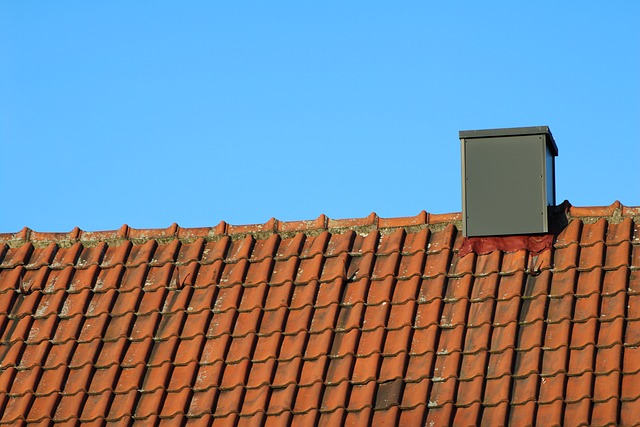White cool roofing is a highly effective solution for improving energy efficiency and reducing cooling costs in both new construction and retrofitting projects, especially in warm climates. By reflecting sunlight and heat away from buildings, it mitigates the urban heat island effect and lowers interior temperatures, easing the strain on air conditioning systems. When selecting a cool roof system, prioritize white cool roofing for its high Solar Reflectance Index (SRI) ratings and durability. Seek expert advice for installation and maintain regular inspections to ensure optimal performance. Real-world applications demonstrate significant energy efficiency gains, sustainability improvements, temperature decreases, and lower AC energy consumption, making white cool roofing an environmentally friendly and economically viable option.
Looking to elevate your building’s energy efficiency with a white cool roof? This comprehensive guide deciphers the essentials of white cool roofing, exploring its benefits and foundational concepts. We dive into the various types of cool roof solutions available, guiding you through key selection factors for optimal performance tailored to your needs. From expert installation and maintenance tips to inspiring case studies, master the art of choosing and implementing a superior white cool roof system.
Understanding White Cool Roofing: Benefits and Basics
White cool roofing is a highly effective solution for those seeking to enhance energy efficiency and reduce cooling costs. This method involves installing a reflective roof membrane or coating, typically white in color, which helps reflect sunlight and heat away from the building. The key benefit lies in its ability to mitigate the urban heat island effect, where urban areas experience higher temperatures than their rural surroundings. By reflecting solar radiation, these roofs keep buildings cooler, thereby lowering energy demands for air conditioning.
The basics of white cool roofing are straightforward. Traditional dark roofs absorb sunlight, leading to increased interior temperature and greater strain on cooling systems. In contrast, reflective white roofs emit most of the sun’s heat, maintaining a lower roof temperature and reducing the need for excessive cooling. This simple yet powerful concept has led to its growing popularity as an environmentally friendly and cost-efficient option in construction and retrofitting projects.
Types of Cool Roof Solutions: An In-depth Look
Cool roof solutions come in various types, each offering unique benefits for different needs. One popular choice is white cool roofing, which involves applying reflective and highly breathable materials to a roof. This method not only reduces heat absorption but also helps regulate indoor temperatures, making it ideal for energy-conscious homeowners. White cool roofs are particularly effective in warm climates with high solar radiation levels.
Other options include the use of cool roof coatings, which can be applied over existing roofing systems. These coatings reflect sunlight and emit infrared radiation, providing insulation benefits. Additionally, there are cool tiles and shingles that mimic the appearance of traditional roofing while offering cooling advantages. Each type has its own advantages and considerations regarding cost, installation complexity, and aesthetic appeal, making it crucial to understand these options before making a decision.
Factors to Consider When Choosing a Cool Roof System
When selecting a cool roof system, several key factors come into play. One of the primary considerations is the white cool roofing option, which is designed to reflect sunlight and reduce heat absorption. This is particularly important in regions with hot climates, as it can significantly lower building energy consumption. The efficiency of a cool roof is measured by its Solar Reflectance Index (SRI), so look for products with higher SRI ratings for optimal performance.
Another crucial aspect is durability. Cool roofs are exposed to various environmental conditions, from extreme temperatures to precipitation. Ensure the chosen system has a robust design and high-quality materials to withstand these challenges over time. Additionally, consider the ease of installation and maintenance, especially if your building requires regular upkeep. Choosing a system that aligns with these factors will ensure a reliable, energy-efficient solution for your roofing needs.
Expert Tips for Installing and Maintaining Your Cool Roof
When it comes to installing a cool roof, seeking expert advice is crucial for ensuring optimal performance and longevity. Professional installers understand the nuances of different cool roofing materials, such as white reflective membranes, which are highly effective in reducing heat absorption. They can assess your specific needs, including the climate, building structure, and budget, to recommend the most suitable solution.
Proper maintenance is equally vital for keeping your cool roof in top condition. Regular inspections are essential to identify any signs of damage or degradation. Experts suggest scheduling routine checks during significant seasonal changes. Additionally, cleaning the roof surface periodically helps maintain its reflective properties, especially with white cool roofing materials that can become contaminated by dirt and debris over time.
Case Studies: Successful Implementations of White Cool Roofing
White cool roofing has proven to be a game-changer in various real-world applications, showcasing its effectiveness and benefits through numerous successful case studies. These implementations highlight how choosing white cool roofs can significantly impact energy efficiency and sustainability goals for both residential and commercial buildings. For instance, a recent study in a major metropolis revealed that adopting white cool roofing technologies led to an average of 20% reduction in peak cooling demand during the hottest summer months.
Another notable case involves a large-scale retrofitting project where older buildings were equipped with white cool roofs. The results were impressive, as these structures experienced substantial temperature decreases inside, leading to lower energy consumption for air conditioning and reduced carbon emissions. These successful implementations demonstrate that white cool roofing is not just an eco-friendly option but also a practical solution for cost savings and extended roof lifespan.
In conclusion, embracing white cool roofing is a strategic decision that offers multiple environmental and economic benefits. By carefully considering your specific needs, climate, and budget, you can select the best cool roof solution. The expert advice and case studies presented in this article serve as valuable resources for navigating this process successfully. Implementing white cool roofing isn’t just about enhancing energy efficiency; it’s a step towards a more sustainable future.
